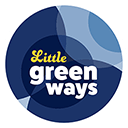Let’s talk bananas. If your house is anything like mine then there is this sweet spot while bananas are on the green side of yellow and they dissapear more quickly than I can buy them. If they start to go golden or spotty then it’s another story – you couldn’t pay my kids to eat them and I can’t blame them as I dislike them too.
But Food Waste Is a Massive Environmental Problem!
It turns out that our food waste is a massively contributing factor to many environmental problems. First of all there is the transport of food waste away form our homes (adding to co2), if we put it in general waste it produces methane (which is 20x more powerful that co2 in contributing to climate change). The wasted land use for uneaten foods contributes to problems such as biodivesrity loss and water usage.
I’m very keen to improve our waste food and so on the hit list today were those brown bananas!
“Without accounting for greenhouse gas emissions from land use change, the carbon footprint of food produced and not eaten is estimated at 3.3 Gigatons [billion tons] of CO2 equivalent: as such, food wastage ranks as the third top emitter after the USA and China.”
So back to my bananas – could I do more?
 Making a banana loaf
Making a banana loaf
I had a whopping 7 brown bananas, solution 1 was to make a cake! My baking sills are somewhat lacking, but I found a recipe for banana bread which was very easy and involved few ingredients, all of which I already had in stock. In fact the recipie was so easy that my 6 year old managed it! For extra bonus green points I added in some sad looking dregs of nuts and fruit which had been in the back of my cupboard for some time.
The Result?
It was a unanimous – DELICIOUS!!! So good, almost too good in fact…
What about the rest of those bananas?
After my baking efforts I still had another 4 bananas to go… what to do? I am partial to the odd green smoothie – with the ripe bananas being more sweet they are the perfect addition to balance out all the green goodness! So I simply chopped them up and placed them in a (reused of course) bag ready to be retreived from the freezer and used when required.
Alternatively I could use the frozen bananas to
- Make another banana loaf at a later date.
- Blended them to make a delicious vegan ice cream substitute

Remember to compost the skins!
The more we can compost in our own homes the better so for the perfect zero waste banana experience make sure that you also compost those skins too!
But isn’t eating a fruit transported 1/2 way across the world a pretty environmentally unfriendly?
Thankfully bananas are not only nutritionally amazing but they are one of the best low carbon foods that we can eat. Not that they are perfect but very little of our diet in the UK is better.
And of course if we can ensure that we make the most of all that we buy, we are improving out environmetal impact all round.











